India will be celebrating the 21st anniversary of Kargil Vijay Diwas on 26th July. Kargil war is known as one of the ‘hardest fought’ battle in modern Military history. In summer of 1999, this limited war was fought on the heights of Himalaya, range between 4000-5500 meters, the temperature usually remain in subzero range for most part of the year.
This war formally came to an end once Indian Army had successfully recaptured all the mountain heights seized by Pakistani Army. Kargil war went on from May 3 to July 26 1999 after Pakistani troops were seen at the Kargil ridges.
Though it is not possible to cover the Kargil War in just a single article, still we will be able to provide a sort of summary of the entire War.
Was it an intelligence failure?
Yes, up to a great extent it was indeed an intelligence and even this has been maintained by several senior Army Officers that it was an intelligence lapse which caused this war. It could have been averted for sure.
What was Pakistan’s objective?
One of the factors behind the Kargil War was Pakistan’s massive defeat in 1984 at World’s Highest Battleground known as Siachen Glacier, where Indian Army outsmarted Pakistani Army and captured it. Since then Siachen Glacier was an excruciating issue for Pakistani Establishment, they were unable to forget this beating.

In 1999, the then Pakistani Army Chief, General Musharraf planned this dubious act and sent Pakistani Army to occupy vacated Indian posts across the Line of Control. Pakistani Army believed they can block the National highway-1, which is very crucial for India. They thought that India would be forced to withdraw from Siachen in exchange of a Pakistani withdrawal from Kargil.
Another objective of Pakistan was to was to internationalize the Kashmir issue and change the alignment of the Line of Control in the Kargil sector by opening the conflict against India. However, Pakistan’s plans were backfired big time.
Pakistan launched Operation Badr
Pakistani Army conceived ‘Operation Badr’, the sole objective was to enforce an infiltration of Pakistani Army into the Indian territory.

Initially Pakistan pinned the blame of the attack on Kashmiri local insurgents, however later due to enough documentary evidences, it was proved that Pakistan Army was directly involved in the attack.
Pakistan back-stabbed PM Vajpayee
The then Indian PM Vajpayee and Nawaz Sharif had signed the Lahore Declaration in February 1999. This gesture between the two leaders actually aimed at de-escalating the Kashmir tensions. However, the issue further exploded after the Kargil war as there was an environment of animosity created by Pakistani Army and Government.
Pakistan breached the trust, yet again
There was an agreement between both the Armies, due to the inhospitable conditions and indomitable heights and harsh weather, that both the armies will vacant their respective forward posts from 15 September to 15 April each year. But as expected, Pakistan breached the trust to occupy these daunting heights, to block Indian Army’s access to Siachen Glacier.
Three phases of Kargil War
First Phase – Discover Infiltration and Mobilize Troops – Pakistan’s intrusion was detected by a local shepherd, who informed Indian Army about suspected movement on heights. Basis on those tips Indian Army sent couple of Patrol teams to identify the movement. To India’s shock, Pakistani Army captured Indian Soldiers (led by Captain Saurabh Kalia), who were later tortured to death and their mutilated bodies were recovered later.
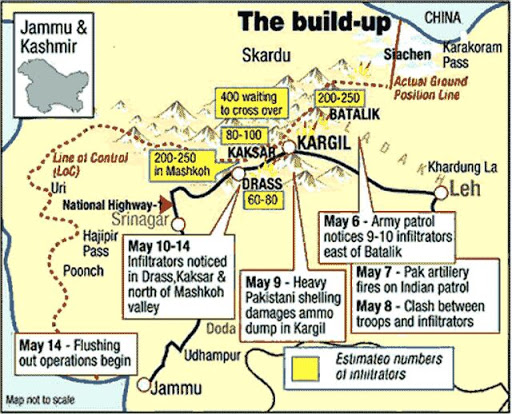
Indian Government responded with Operation Vijay and mobilized more than 2,00,000 troops to the war zone. Indian Airforce initiated ‘Operation Safed Sagar’ to support Indian Army in their mobilization and other battle related operations.
Second Phase – Attack on Pakistani positions – Indian Army’s first objective was to recapture the heights directly overseeing the NH-1. Indian Army started targeting the Tiger Hill and Tololing complex in Dras, and soon followed by the Batalik-Turtok sub-sector. Some of the peaks like 4590,5353 were extremely vital for their strategic importance. Most of the heights in the vicinity of the NH-1 were cleared by mid of June.

Then Indian Army turned its focus towards Tololing and Tiger Hill. Both peaks were extremely crucial and Indian Army had to give its everything to won them back over. The battles of Tololing and Tiger hill are known as among the most fiercest once in the history of Indian Army.

Third Phase – Occupying the heights and withdrawal of Pakistan – Pakistan realized that India may cross the LOC and may continue impounding them further, hence they sought American help in de-escalating the conflict. Pakistani PM Sharif rushed to USA and requested US Government to halt the assault of Indian Army on his forces. However, US intelligence had got some credible evidence that Pakistan was preparing its nuclear weapons for deployments. The then US President Clinton refused to intervene until Pakistan had removed all forces from the Indian side of the LOC.
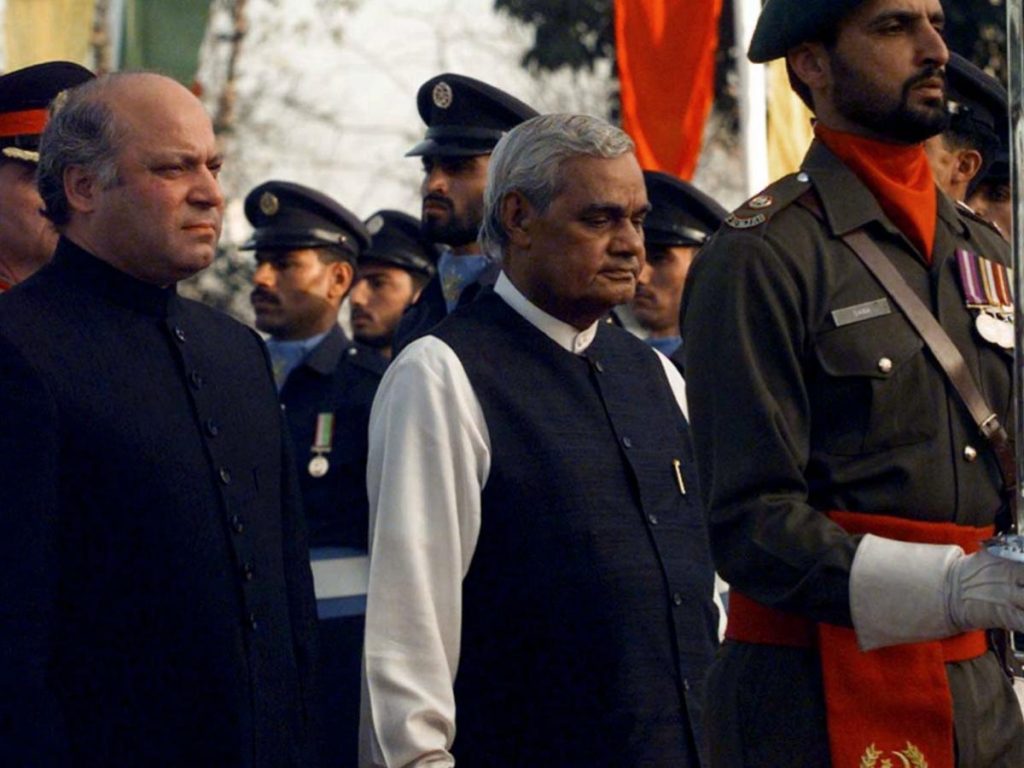
Under immense International pressure, Pakistani Army had to withdraw from Indian side of LOC and had to surrender the control of these heights to Indian Army.
On the other hand, Indian army launched its final assault in the last week of July in co-ordination with Indian Airforce. Both Forces fought in tandem and soon the fighting was ceased on 26 July. This day has since been marked as Kargil Vijay Diwas in India.
India garnered huge International Support
In all previous conflicts between India and Pakistan, the later had to be an upper hand, as far as International support was concerned. However situation changed during Kargil war. It was the first time the USA supported India’s position. G8 nations also supported India and condemned the Pakistani violation of the LOC and asked Pakistan to withdraw immediately.
The European Union also opposed Pakistan’s violation of the LOC and asked it to take a step back. Even China, which is an all-weather friend of Pakistan, also insisted that Pakistan should pullout its forces without any conditions. Other prominent organisation like Asean Regional Forum also weigh its support in India’s favour and asked Pakistan to respect the sanctity of LOC and withdraw its troops.
The War against all Odd, and Indian Force’s Valour
Kargil War is a textbook example of how Mountain Battles should be fought. Pakistani Army had occupied the positions at higher peaks. Its an official rule of Mountain Warfare that troops on lower ground should have a combat ratio of 1:6, but in circumstances like Kargil, Batalik or Drass, it may go up to 1:10.
It was not a simple war, it was indeed a high altitude asymmetrical war. It is said that Pakistani Army was in such a good position, that their troops were hitting Indian soldiers almost for a shooting practice.
Another important aspect is that Mountain Warfare is generally fought during the dark, as it is extremely risky to mount an attack on rival during the broad sunlight, as it may result in huge casualties.
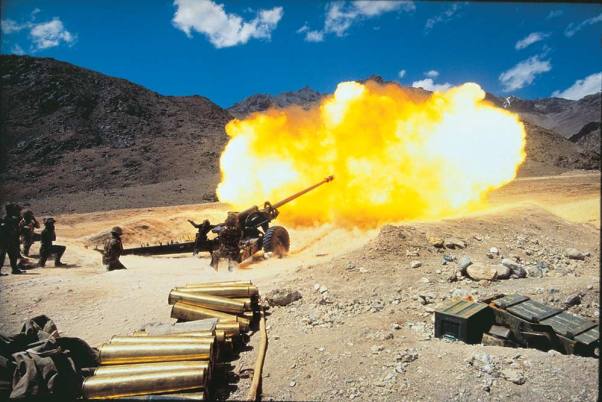
Considering all above factors, there is no hesitation to say that Indian Forces fought really hard and unheard battle at Kargil heights. Indian army had actually done an unbelievable and tremendous job in fighting and pushing the infiltrators away from out territory.
Pakistani Army tried every ill practice to break the morale of our brave hearts, by capturing our Patrol Team, mutilate their bodies, uttering derogatory comments about our women and what not. But our Armed Forces kept it going.
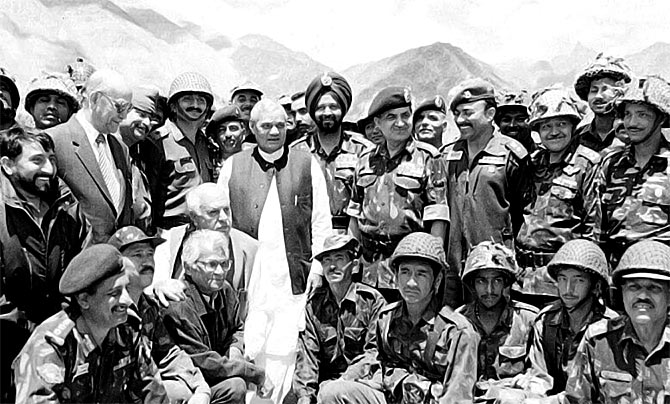
Our Supplies were affected due to continuous shelling on NH-1 by Pakistani Troops, still Indian Armed Forces didn’t blink an eye and fought this battle extremely professionally.
India lost its 527 Brave Hearts in Kargil War. Our Brave hearts fought really hard for their Nation, Their Paltan, their Namak and Nishan. They earned 4 Param Vir Chakras and 11 Mahavir Chakras and several other Sena Service Medals for their bravery.
Kargil War Memorial
To remember the Brave Hearts and to celebrate their valor, The Indian Army built The Kargil War memorial in Dras, which commemorates the martyrs of the Kargil War. The names of the soldiers who sacrificed their lives are inscribed on the Memorial Wall. A museum attached to the Kargil War Memorial, which houses the pictures of Indian soldiers, archives of important war documents and recordings.
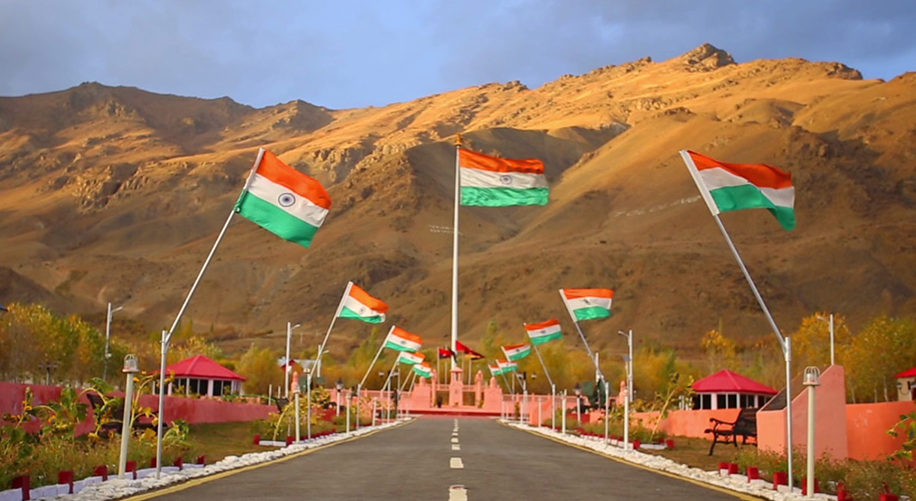
Today, on 21st anniversary of Kargil Vijay Diwas, we would like to remember all our Brave Hearts, we would like to bow our heads, pay our respect to their supreme sacrifice. Kargil War strengthened the belief of every Indian in our Armed Forces, the Nation knows that our Armed Forces are our First and Foremost level of defense, we have a Professional and humane Army, which can fight in any indomitable terrain and can achieve unthinkable. We Salute our Armed Forces.
Jai Hind